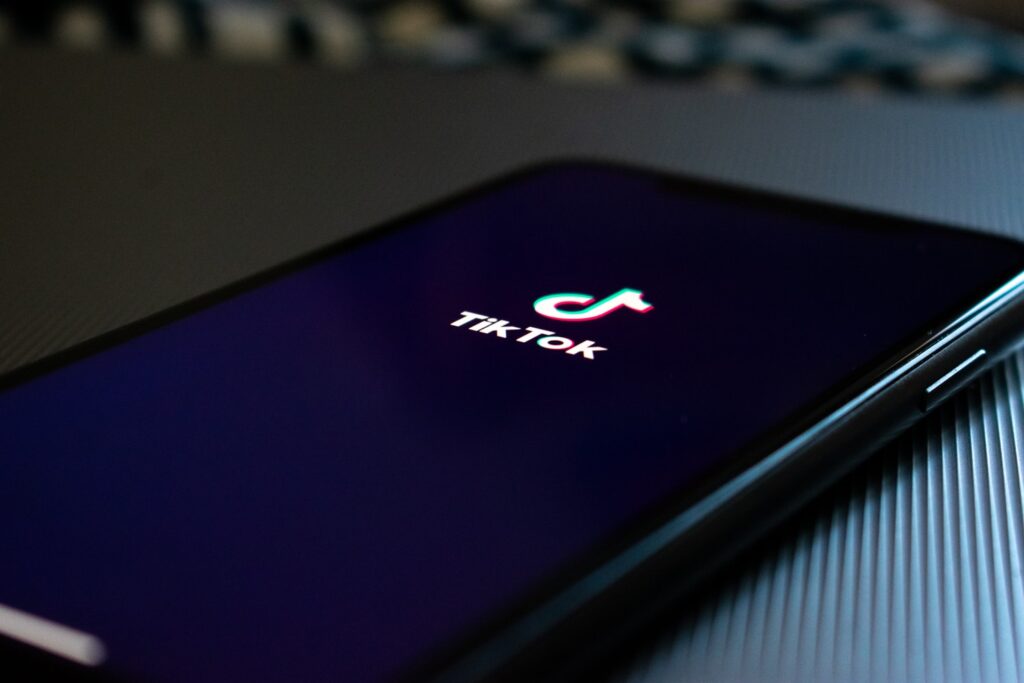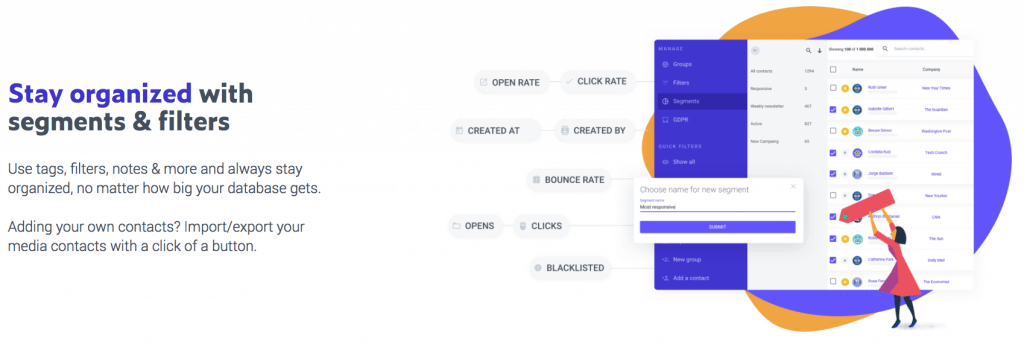When TikTok first hit the social media party on a global level, it was easily written off as a “Snapchat-esque” platform where young social media influencers and general users alike could share small snippets of a video in a cut-and-paste fashion. But, like many new platforms, many PR and Marketing professionals ignored it and waited for the trend to pass.
As time has gone on, it has become increasingly apparent that TikTok has no intentions of going anywhere. In fact, many well-known blog platforms and media sources have begun implementing it into their processes.
For example, Buzzfeed has begun recruiting teenagers to cover important events like the election on TikTok, and the Washington Post even has a TikTok app expert on their team. It is a hub for advertising and getting your name out there, and that has begun to become a more recognizable effect of the usage.
So, maybe it is time for your company to start utilizing TikTok as a marketing source. If you have found yourself to be even slightly curious, read on to learn more about what this emerging media source is and why you as a PR professional should care about it.
What is TikTok?
A lot of people have heard of TikTok, but not many seem to have a clear understanding about what the app actually does. TikTok refers to itself as the “destination for short-form mobile videos.” Think of it as a small-bit version of a Youtube video, except the videos on TikTok only range from 5-60 seconds in duration. When people create their videos, they can use a variety of filters and effects, as well as add tracks through the large music library provided.
Similar to the way YouTube operates, TikTok is full of influencers who use views, likes, comments, and shares to make money—and many of these people are not celebrities that often flood the mainstream. But TikTok’s most central feature is the algorithm it uses to allow artificial intelligence to show the user personalized recommendations and immediately draw them in upon opening the app with videos that play instantly.
How Does TikTok Work?
Before you can begin using TikTok for your PR and marketing strategies, you should probably understand a bit more about how the platform works and what people typically do on it.
What can you do?
You can watch and create videos. This probably seems obvious, but people use TikTok primarily to create, share, and watch videos, which is the heart of the TikTok experience. Users can upload or edit their videos with multiple recording features. Users are also able to live stream whenever they desire.
You can add music. TikTok has an extensive music library in coordination with Apple Music, and this is something that gives the app and edge over other social platforms. Users are able to do just about anything with the music, and it is essential to the success of their operation.
You can interact with others. Just like most other social media accounts, users on TikTok can follow the accounts that they like, and interact with the posts.
You can spend virtual coins. Users are encouraged to give each other virtual gifts on TikTok. When someone purchases them, they are able to convert them into bits like diamonds or emojis. Diamonds can be exchanged for cash. The prices on these coins start at $1.39 for 100 of them, and go all the way up to $139.00 for 10,000

How are People Using TikTok?
One thing that is important to understand about TikTok is that there are no clear-cut guidelines and rules about how each user should use the app. There are obviously certain kinds of videos that become more popular, and therefore are made more frequently (think cat videos, lip synching, fail videos, and comedy sketches). Though there are no rules, there are some formats that people generally use TikTok for.
- Reaction Videos. We initially started seeing reaction videos emerging on Youtube, but TikTok has found a way to make them better. When someone posts a video, users are given the option to react under the share option. They then record their reactions as the video plays out, and position where they want their overlay to appear against the video.
- TikTok Challenges/Trends. This typically involves a song or hashtag that is popular among the public, Users take advantage of trending songs and hashtags as prompts to create their own interpretation of the theme.
- Cringe Videos. We all love to hate these videos. They are videos that aim to make the audience feel uncomfortable and cringe at the performance and scenario being played out. These videos are generally funny and embarrassing – but you just cannot look away (like the pimple popper videos).
- Duets. This is a popular feature that allows for collaboration between users. They are able to sample another person’s video and add themselves to it. These can range from actual genuine collabs to spoofs and more. A lot of popular artists have used TikTok to promote singles they have released and connect with their fans a bit more.
Okay, now you should have a much clearer understanding of how TikTok works and what people typically use it for. Now, let’s look at just how popular this platform is, who uses it, and why that should be important for your PR and marketing efforts.
Demographics and Statistics
TikTok has been rather elusive when it comes down to providing specific metrics and statistics, but there is information out there that is useful.
- TikTok currently sits as the sixth largest social network in the world
- To date, there have been more than 1.65 billion downloads on the app
- In 2019, the app was installed more than 738 million times. This made it the second most downloaded app of 2019
- Not long ago, someone from TikTok leaked that the app has 800 million users that are active monthly – 500 million of them being in China. The Chinese version of TikTok called Douyin has reported 400 million users active daily
- The average TikTok user opens the app more than 8 times every day
- Most of the app users are categorized as status seekers whose entire goal on the app is to rise in popularity and fame

Demographics for the US and Britain
- TikTok reports that there are more than 30 million active users monthly in the U.S.
- The U.S. accounts for 6% of global downloads, Britain accounts for 2%
- The average user spends about 46 minutes every day on the app
- 34% of the daily active users record videos every day
- The biggest age group is 18-24 years old, which make up about 42% of demographics with 13-17-year-olds not far behind
- There is a slight lean toward female users making about roughly 60% and males making up about 40%
Okay, now that we have gone over the general user demographics on the app, it is time to determine if you can and should use TikTok in your PR strategy. After all, if statistics show that it is typically used by young people, then it may not be the best fit for everyone.
Using TikTok for Your Brand
TikTok may not be right for everyone, as the statistics show. On the other hand, if your brand or clients work with a younger audience, TikTok can be considered essential for you to use. It is important, however, to understand that this is not the only option you have.
Communicating with your audience is something that should be explored and experimented with before making any set-in-stone decisions, but generally any creative social channel is a good tool when you are trying to be creative with your PR. In the last year, TikTok introduced self-serve advertising platforms for advertisers and professionals. Let’s look at some of the most popular advertising platforms that are being used.
Branded Hashtags. This seems to be the most popular approach that brands have taken on TikTok. Several big-name companies have run campaigns through this. When these companies create their campaigns, they encourage users to create videos that revolve around a specific branded hashtag, which often has a specific song or set of dance moves. A popular example of this would be Pepsi’s #SwagStepChallenge, which not only dominated TikTok, it also spilled into Twitter and Youtube. Not only do these videos appear in the normal feed, branded hashtags are also available in the Trending section of the Discover tab. A user can click on it, and they are brought to a Challenge Page with a brief description of how to participate.
Video Ads. There are three popular ways that experts use to insert advertisements into their videos.
Brand Takeover. When someone opens TikTok, a brand takeover ad pops up. These ads are usually 3-5 seconds and are either videos, GIFs, images, and links to an external or internal landing page. The app only gives one advertiser per day to use this format, but it guarantees 5 million impressions.
In-feed Video. These ads are about 5-15 seconds long and are basically just TikTok videos that have been promoted. Users can interact with these ads and click onto profiles just like they can with organic content. You can get access to these ads through the auction model.
Top-view Video. This is like a mash-up between takeover and in-feed ads. They begin with a takeover and transition into an in-feed video which lasts around 15 seconds in total.
Branded Lenses. Brands have the ability to partner with TikTok to create both 2D and 3D lenses for users to “try on” and share. This also gives companies the ability to land in the Trending section of the Discover tab for 10 days. This is a great option as around 64% of TikTok users have tried facial filters and lenses.
Partnering with Influencers. When you think about the previously mentioned hashtag challenges, a lot of brands have started teaming up with TikTok influencers to promote their hashtags or to promote products. TikTok will even provide you with a list of potential creators that brands might sign contracts with.
Discover relevant media contacts and influencers from around the world with up-to-date contact information

Stay Ethical
As for any other social networks, there are ethics that you need to take into consideration if you are thinking about adding TikTok to your marketing and PR repertoire. There are topics that you have to tread carefully when discussing them, which most of you are probably well aware of at this time. But, brands should also be wary of the collaborations they start as the user base of TikTok is on the younger side.
There are things to consider when you partner up with a big influencer who also happens to be a young teenager. It is important to make sure that whatever you choose to discuss and post is appropriate not only for your business and your audience, but the audience and demographics of anyone you partner with as well. There is a risk of losing control quickly since the platform offers the ability to respond with videos, and this should definitely be considered.
Now What?
If you are still here, then you are genuinely interested in learning about how TikTok works and how you can use it in your PR strategies. There has been a lot of information thrown at you, and you may still have some questions. That’s ok! Start small and run some tests. Much like you would with any other strategy, do your research and plan out the best possible way to utilize this platform so that it works for you. Adding TikTok to your system can have massive benefits and rewards, but you have to be willing to put in a bit of elbow grease to get the results you want.

